Knowing the signs of poisoning in dogs is a must as a pup parent. You won’t always see when your dog is exposed to something toxic, so recognizing the signs of dog poisoning is critical for getting him the care he needs promptly.
Below, we’ll share some of the most common signs of dog poisoning and explain what to do if you suspect your pup has come into contact with something toxic.
Signs of Poisoning in Dogs: Key Takeaways
- Dogs who consume poisonous or toxic substances often (but not always) exhibit any of several common signs. Some of the most likely things you may notice include nausea, vomiting, diarrhea, poor coordination, excessive panting, lethargy, and seizures.
- Contact your vet or the Pet Poison Helpline if you know or suspect that your dog has eaten, inhaled, or touched anything toxic. This is important as different types of poisons require different types of treatments. For example, you should induce vomiting following the ingestion of some dangerous substances, but this is a bad idea when dealing with other kinds of toxins.
- Ideally, you’ll prevent your dog from ingesting anything toxic in the first place. While there are treatments for many dog poisons, as is so often the case, prevention is always better than treatment. So, keep dangerous substances out of your pet’s reach and be sure to monitor him closely at all times.
Signs of Poisoning in Dogs
Poisoning symptoms vary by dog and toxin, but many share the same list of reactions to watch for, including:
- Nausea/vomiting
- Throwing up white foam
- Poor coordination or balance
- Diarrhea
- Seizures
- Excessive panting
- Coughing or retching
- Increased thirst
- Tremors
- Skin irritation
- Loss of appetite
- Lethargy
- Excessive drooling
- Weakness
- Collapsing
- Change in gum color (white or yellow)
- Loss of consciousness
Some toxins are more slow-acting than others, making their symptoms harder to notice. Worse, they may lead you to think that your pooch is fine because he doesn’t appear to have a serious reaction.
Never fall into this trap.
Even if the effects seem minimal, contact your vet if your dog ingests a toxin or strange substance.
Your Dog Ate Something Toxic: What Do You Do?
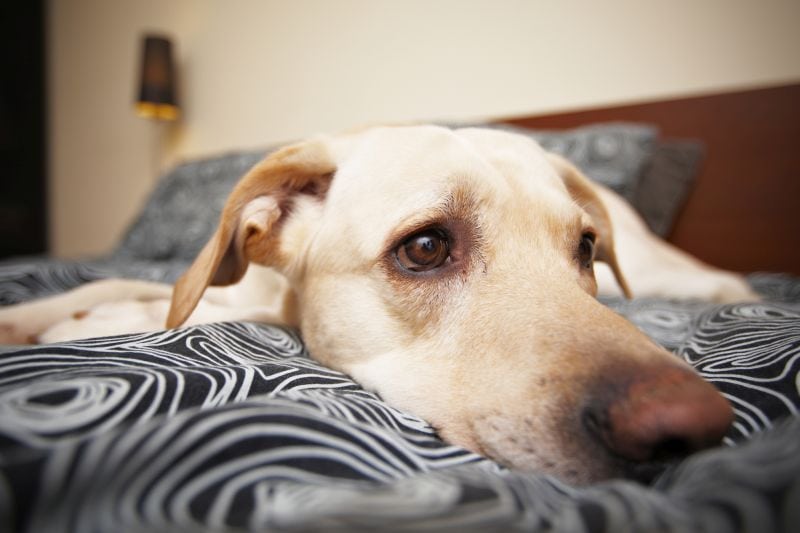
As soon as you suspect poisoning, remove the toxin from your dog’s reach and call your vet right away.
Remember: Time is your enemy with toxicity. Do not offer your dog anything (food or water) and do not make your dog throw up by inducing vomiting without a veterinarian’s instruction. While well-intentioned, you may accidentally make the situation worse.
If you cannot get in contact with your vet, try calling another local veterinarian or call the Pet Poison Helpline if all else fails. They can provide proper instruction, including whether immediate intervention (such as inducing vomiting) is recommended or not.
Never take the “wait and see” approach with poison or try to self-treat at home. The effects of poisoning can include anything from lifelong neurological damage to death.
Don’t have easy access to a vet? You may want to consider getting help from JustAnswer — a service that provides instant virtual-chat access to a certified vet online.
You can discuss the issue with them, and even share video or photos if need be. The online vet can help you determine what your next steps should be.
While talking with your own vet — who understands the ins and outs of your dog’s history — is probably ideal, JustAnswer is a good backup option.
Some Common Dangerous Substances Dogs Eat

Toxins come in many forms around your home and yard, from the well-known to some that may surprise you. Unfortunately, in many cases, the items that seem completely harmless pose the most risk to our fur kids.
Protect your pooch from harm by keeping these dangerous items out of reach:
- Insecticide
- Cigarettes
- Marijuana
- Paint
- Raw yeast dough
- Macadamia nuts
- Medication
- Alcohol
- Avocado
- Chocolate
- Antifreeze and ice-melt products
- Garlic
- Onions
- Potpourri
- Batteries
- Household cleaners
- Grapes/raisins
- Glue
- Rat or ant poison
- Flea and tick products
- Xylitol (artificial sweetener found in sugar-free gum and some peanut butter)
While most common flea and tick products are safe when used according to the manufacturer’s instructions, they can be very dangerous when used incorrectly. This means that:
- You’ll always want to be sure to use these products in exactly the manner described.
- You must make sure to purchase the correct strength (e.g. don’t use a flea preventative designed for big dogs for your Yorkie).
- Monitor your dog carefully for the first few days after switching to a different flea or tick prevention product. Be sure to watch for any of the signs of poisoning described above.
- Keep the packaging from any flea or tick product on hand so that you can share it with your vet if trouble arises.
Dangerous Plants to Avoid Around Dogs

Poisonous plants are a sneaky foe that sometimes slip under the radar, but there are many out there (including in your garden) that can harm your pooch. And unfortunately, different parts of different plant species are dangerous, from buried bulbs to blooming blossoms.
Plants that are poisonous to dogs include:
- Lily
- Hemlock (the plant, not the tree)
- Crocus
- Rhododendron
- Yew
- Wild mushrooms*
- Daffodil
- Aloe vera
- Azalea
- Oleander
- Sago palm
Just be sure that you’re always sticking with dog-friendly shrub plants and dog-safe flowers when gardening! If you’re unsure if a given plant is safe, just ask your vet to clarify.
Surprisingly, poison ivy usually isn’t a big issue for dogs, as it actually causes an allergic reaction in humans rather than being truly poisonous. That doesn’t mean you want to let your dog roll around in a big patch of poison ivy (he can get the oils on his fur and then spread them to you), but you don’t usually have to worry about these plants on your pooch’s behalf.
*No, mushrooms aren’t technically “plants,” but we’re including them anyway.
Other Forms of Dog Poisoning
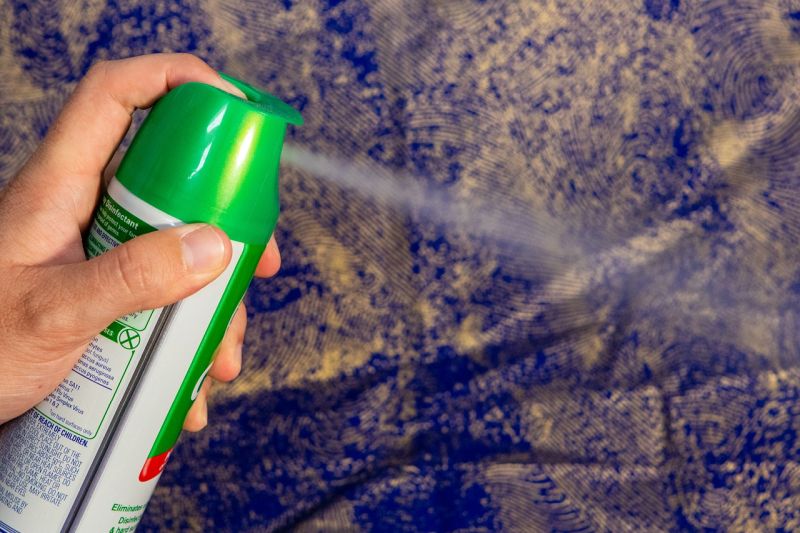
Toxic exposure doesn’t always occur through ingestion. It’s important to keep this in mind around the house, as some substances can pose a threat long after they’ve been tucked out of your dog’s reach.
Your dog can inhale some kinds of toxins, including:
- Smoke
- Insecticides
- Paint
- Household cleaners
If you know the product you’re using makes harmful fumes, remove your dog from the area and keep it well-ventilated until all traces are gone. Opening a few windows and turning on a fan won’t always guarantee safety, but they’ll certainly help.
Your dog can also absorb toxins through his skin, such as:
- Household cleaners
- Insecticides
- Rat poison
- Fertilizer
- Some medications (such as some opioids)
As disgusting as it may seem to us, our dogs occasionally view the toilet as a water fountain.
But this is not only gross, it’s also potentially harmful. Your toilet obviously contains all types of germs and various cooties, but it may also contain bleach or other cleaners — any of which may sicken your dog.
How is Dog Poisoning Treated
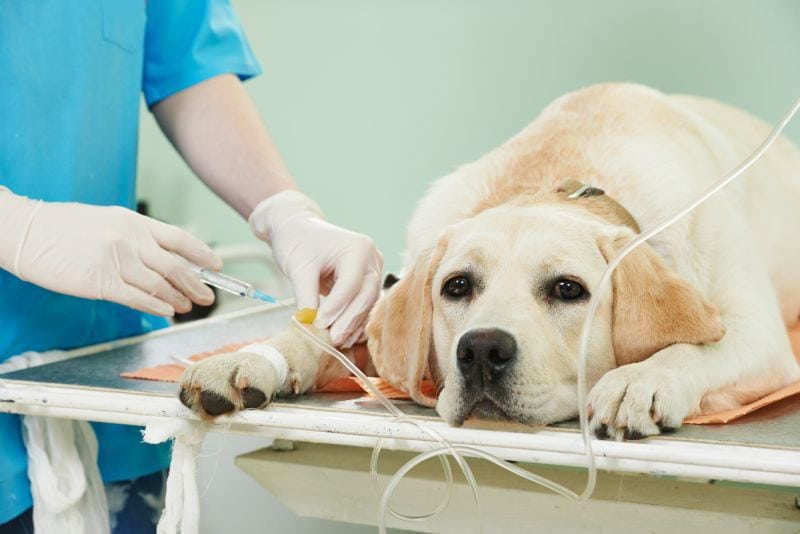
Your veterinarian will do an assessment of your dog’s condition before administering aid. Treatment varies by toxin, your dog’s health status, and other underlying factors.
The most common treatments for canine poisoning include:
- Inducing vomiting. Sometimes, the best way your vet can help your dog feel better is by encouraging vomiting, which will help eliminate some of the toxins in his tummy. But again, this isn’t always advisable (such as when dealing with caustic chemicals), so you should never induce vomiting without your vet’s explicit instruction to do so.
- Administering an antidote. The effects of some poisons can be counteracted with medications. Unfortunately, there aren’t antidotes available for many toxins, so this treatment strategy isn’t always possible.
- Administering activated charcoal. Carbon (the primary component of charcoal) loves to bond with other chemicals, so by pumping your dog’s stomach full of activated charcoal, it can often bond with the toxins, making it harder for your dog’s gut to absorb them and therefore less dangerous to your pet.
- Endoscopy and removal. If the toxic item ingested is a solid object, your vet may be able to retrieve it from your pet’s stomach via a long thin tool inserted in the mouth.
- Surgery. If endoscopy isn’t possible, your vet may have to go in and retrieve some types of toxic objects surgically.
- Providing supportive care. In some cases, your vet may not have many treatment options available. In these cases, your vet will likely just provide supportive care and treat your dog symptoms as they arise.
Your vet will pick the best option for your dog’s situation. Never try to treat canine poisoning at home.
Preventing Canine Poisoning
There are common-sense steps you can take to save your dog from a run-in with poison, but there are also some that you might not have considered. Not every method is 100-percent foolproof because accidents happen, but by following a few basic rules, you can lessen the chances of poisoning dramatically.
Reduce the risk of accidental poisoning in your dog by:
- Keeping dangerous substances out of reach
- Use toddler-proof locks to keep your dog out of cabinets
- Securing trash by using dog-proof trash cans with locking lids
- Using dog-safe cleaners
- Opting for pet-friendly lawn products
- Using insecticides that are safe for use around dogs
- Walking your dog on a lead in unfamiliar areas
***
Hopefully, you’ll never have to use any of this advice, but it’s good to be prepared in the event you face a poisoning scare. How do you stay prepared for doggo emergencies? Let us know in the comments.



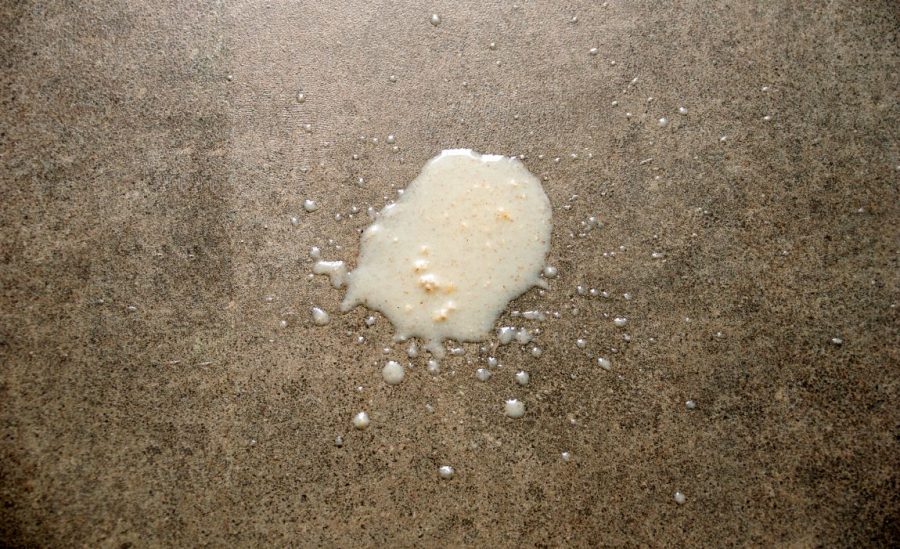


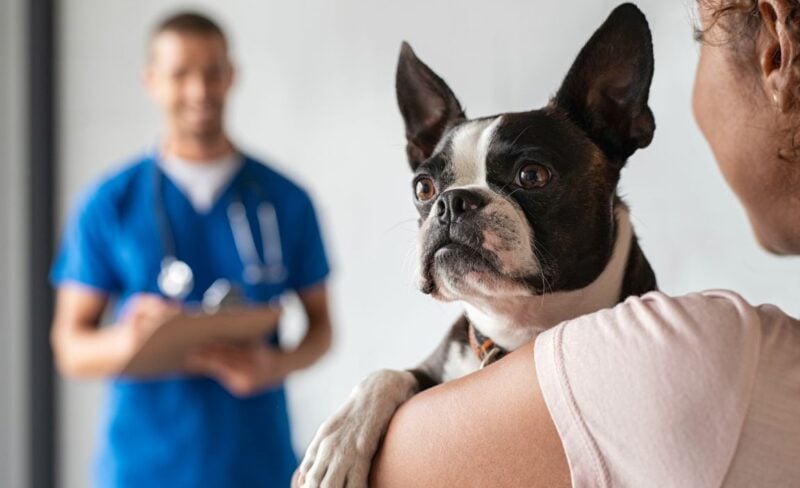

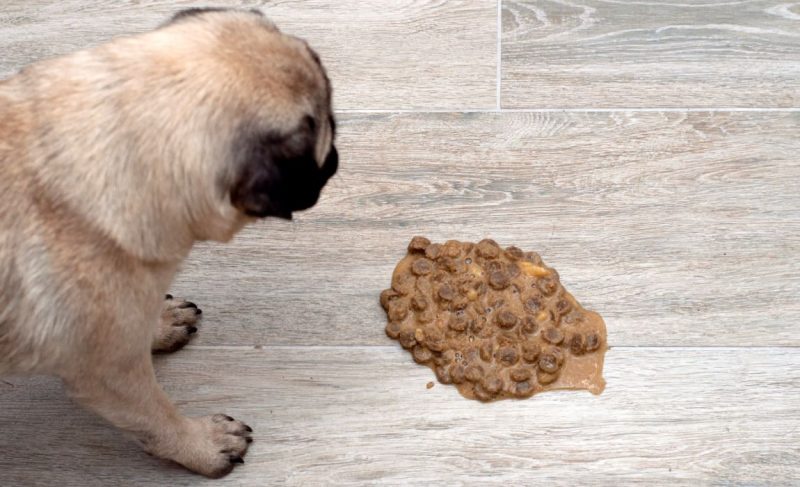
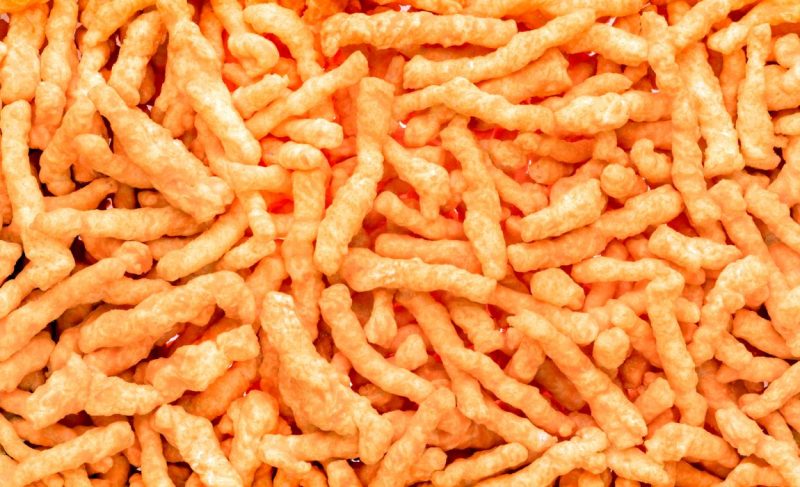
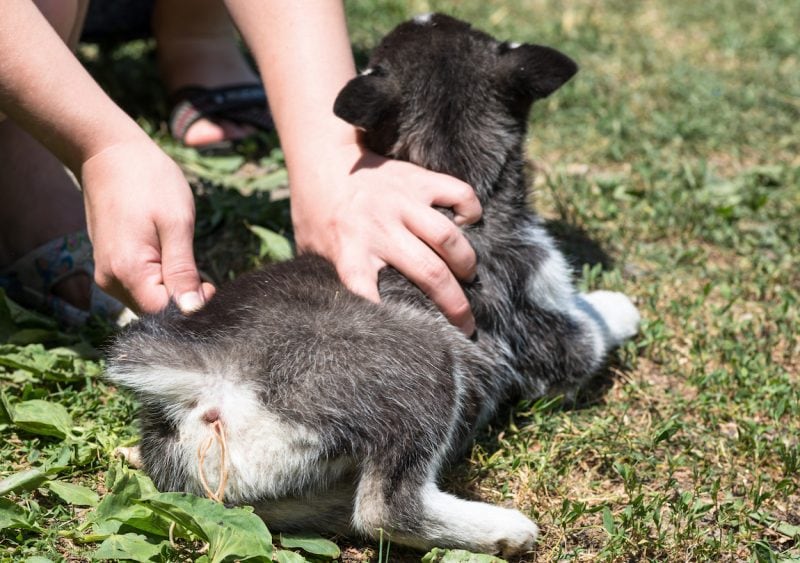
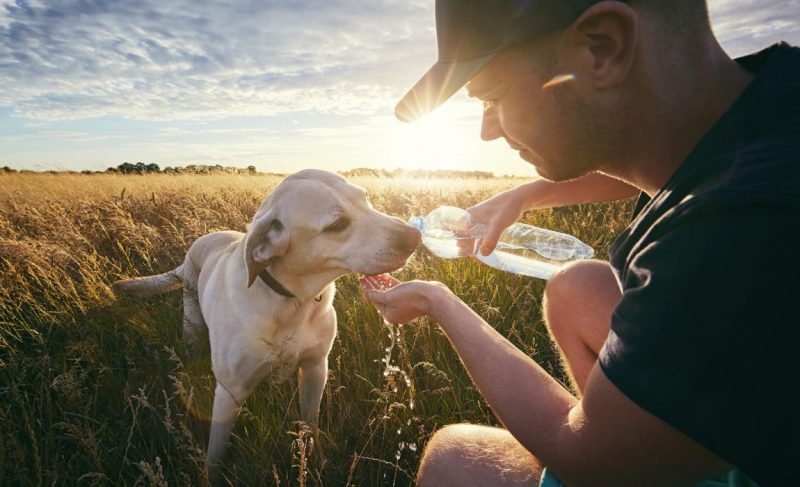

Leave a Comment